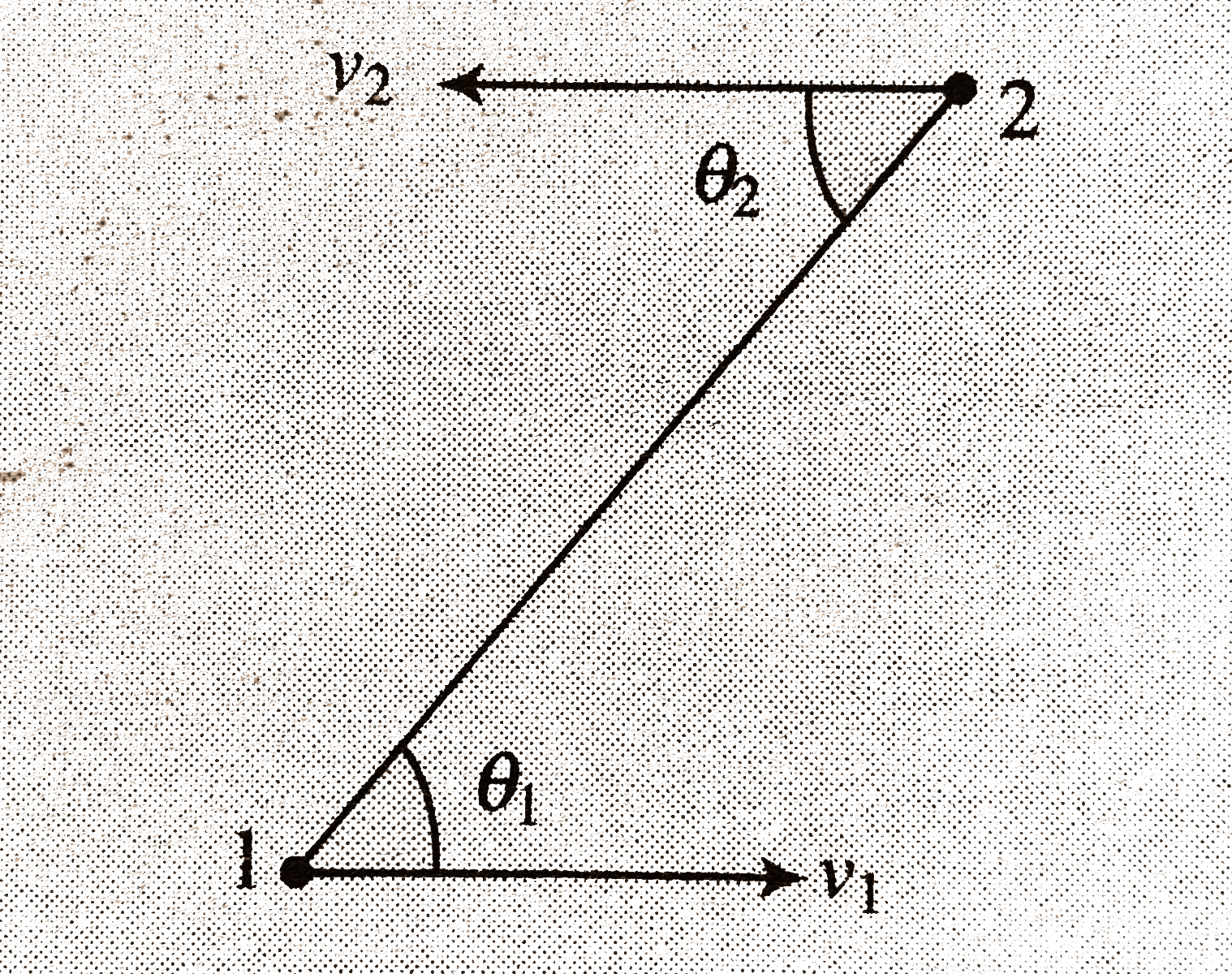STATEMENT-1: Two particles starts moving with velocities →V1&→V2 respectively in xy-plane. They can meet only if component of their velocity perpendicular to line joining them are equal.
STATEMENT-2: Realative velocity of a body w.r.t. other body is calculated along line joining two bodies.
Statement -1 is True, Statement-2 is Ture, Statement-2 is a correct explanantion for Statement-1.
Statement-1 is Ture, Statement-2 is Ture, Statement-2 is Not a correct explanantion for Statement-1.
Statement-1 is True, Statement-2 is False.
Statement-1 is False, Statement-2 is True.
The correct Answer is:C
Step by step video, text & image solution for STATEMENT-1: Two particles starts moving with velocities vecV_(1) & vecV_(2) respectively in xy-plane. They can meet only if component of their velocity perpendicular to line joining them are equal. STATEMENT-2: Realative velocity of a body w.r.t. other body is calculated along line joining two bodies. by Physics experts to help you in doubts & scoring excellent marks in Class 11 exams.
Similar Questions
Two particles 1and2 move with velocities →v1 and →v2 making the angles θ1andθ2 with the line joining them, respectively. Find angular velocity of relative→1.
 .View Solution
.View SolutionSTATEMENT -1 : For an observer looking out through the window of a fast moving train , the nearby objects appear to move in the opposite direction to the train , while the distant objects appear to be stationary .
STATEMENT - 2 : If the observer and the object are moving at velocities →v1 and →v2 respecttively with refrence to a laboratory frame , the velocity of the object with respect to a laboratory frame , the velocity of the object with respect to the observer is →v2−→v(1) .
(a) Statement -1 is True, statement -2 is true , statement -2 is a correct explanation for statement -1
(b) Statement 1 is True , Statement -2 is True , statement -2 is NOT a correct explanation for statement -1
(c) Statement - 1 is True , Statement -2 is False
(d) Statement -1 is False, Statement -2 is TrueView Solution
Knowledge Check
- Question 1 - Select One or More
If two bodies are in motion with velocity →v1 and →v2:
A|vrel|=√v21+v22B|→–––(rel)|=v1±v2∣Cvre=0Dvrel>c (speed of light) - Question 2 - Select One
Two particles of same mass 'm' moving with velocities →v1=vˆi,and→v2=(v2)ˆi+(v2)ˆjcollide in-elastically. Find the loss in kinetic energy
Amv28B5mv28Cmv24D3mv28 - Question 3 - Select One
Two particles A and B start moving with velocities 20 m/s and 30√2 m/s along x-axis and at an angle 45∘ with x- axis respectively in xy-plane from origin the relative velocity of B w.r.t A
A(10ˆi+30ˆj) m/sB(30ˆi+10ˆj) m/sC(30ˆi−20√2ˆj) m/sD(30√2ˆi+10√2ˆj) m/s
Two particles AandB are moving with constant velocities v1andv2. At t=0, v1 makes an angle θ0 with the line joining AandB and v2 makes an angle θ2 with the line joining AandB. Find their velocity of approach.
 .View Solution
.View Solution(A): Relative velocity of A w.r.t. B is greater than the velocity of either, when they are moving in opposite directions.
(R): The relative velocity between any two bodies is equal to the sum of the velocities of the two bodies.View SolutionStatement-I : If two particles, moving with constant velocities are to meet, the relative velocity must be along the line joining the two particles.
Statement-II : Relative velocity means motion of one particle as viewed from the other.View SolutionAssertion: If two particles, moving with constant velocities are to meet, the relative velocity must be along the line joining the two particles.
Reason: Relative velocity means motion of one particle as viewed from the other.View SolutionTwo train are moving in a straight line in the same direction with a speed of 80 km/h. The relative velocity of one trains w.r.t. each other is
View Solution

